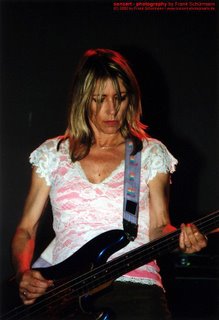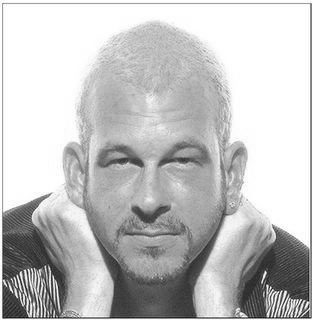Anatomy Of A Song #12: Let It Be
 Ah, dear hearts- there comes a time in the anatomy of any of my songs where I battle the beast of self-doubt. Shocking, I know. Like a gnu in the stomach of an anaconda this lump will assert itself at any time during the process. Usually it comes when most overdubs have been completed and I find myself looking at every element of which the song will be comprised. Nothing is more discouraging to the recording songwriter than the foul, smelly mess that is the Rough Mix.
Ah, dear hearts- there comes a time in the anatomy of any of my songs where I battle the beast of self-doubt. Shocking, I know. Like a gnu in the stomach of an anaconda this lump will assert itself at any time during the process. Usually it comes when most overdubs have been completed and I find myself looking at every element of which the song will be comprised. Nothing is more discouraging to the recording songwriter than the foul, smelly mess that is the Rough Mix.Now I'm convinced it's all crap. All a waste of time. Self-indulgent, unfocused, derivative, bleugh.
Maybe I'll scrap th' whole fucking thing. It's only been three weeks of my life, man.
But wait! What light through yonder window comes!
The solution is always at hand- we simply tune out and spend maybe a half hour listening to commercial radio. "I Could Try" is once again apt. Once again bursting with potential. Once again vital. Thank you Alanis. Thank you everyone. Hey, Nickelback- what do you guys do to get back in touch with the validity of what you're doing when you have doubts? Listen to The Who Live At Leeds? Remind yourselves that at least you're not those execrable louts The Rolling Stones?
All this aside, if there's one thing "I Could Try" ain't it's "unfocused". It's a fuckin' laser of a song. Everything in the arrangement points at and is informed by everything else. It's breezily, unapologetically ambitious, almost showboat-ey. It's like some 60's spaceage bachelor pad makeout pop. It's got a nice bunch of very beefy, organic sounds, the sort of things I always beat myself up for using- leslied organ, leslied guitar, phased drums, tube-saturated bass, all the usual suspects of early psychedelia. Fuck it- I am what I am. My job is to make the beast roar.
The reason that I wanted to do the "Anatomy Of A Song" series is that it's always such a classic story. Man against the seemingly insurmountable. You see, this song was a mountain, man. They fucking all are. And do you see how it was climbed? One foothold at a time? I know one man and his struggles don't amount to a hill 'a' beans in this world but the message I want to impart above all others is the effort is always beautiful. The effort is prayer. My effort or anyone's motherfuckin' effort. It's prayer. It's prayer for people who don't believe in today's God registered trademark. And if you are a machine that is built to do something, do you think you should not do it? Check yer fucking oil and get to work. It's a big mountain but there's always a way up it and the path is usually revealed in th' wanting.
Anyway, in the last couple of days we have stolen valuable hours between gigs and sessions and work to lay all lead and remaining background vocals for "I Could Try". They're damn good. I was worried that I'd modulated the choruses right out of my range but in fact they allow a poignant introduction of falsetto. We have also completed work on the Broken Music Box with some final tweaking, a new, Ringo-ey drum fill and the addition of a tape-rewinding sound that segues neatly into the second-to-last climax of the C major chorus.
I've done a fair amount of "comping", but I don't use this term in the traditional sense. "Comping" usually refers to the practice of "compositing" several takes of a vocal. Your Shitney Pukestons and Michael Boltons and Mariahs, when in the process of recording a lead vocal, will record several, often dozens, of takes and leave it to the hapless producer and engineer to carefully "composite" a final take from this unchristly mess. The engineer will often end up putting the final take together a syllable at a god damn time. Jesus Christ. Nothing left to chance in this day 'n' age, eh?
And! AND! THEY STILL MANAGE TO SUCK.
(A brief aside: Dear World; it isn't pundints. It's pundits. P.S. It isn't renumeration. It's remuneration. Last I checked.)
Anyway, I don't do that crap. Sounds like a fucking waste of time to me. What I do like to do is go through all my vocals and find places where they need a volume tweak up or down. I will perform these volume tweaks as I record each single vocal to an open track and then reassemble the whole mess. I don't have any automation or nothin'. Thus, when I mix I won't have to ride them up and down when I'm trying to get a mouthful of coffee or something equally as important. Digital permits this. We like it.
Woah! We've got all our vocals down! Woah! All instruments! All touches and little points of interest are tracked! This leaves only our trumpet overdubs.
The timing couldn't be better. If I score out all the trumpet parts tonight (there will be a couple of three-part fanfares and some solo instrumental passages) I can give them to our session trumpet player. I'm starting a 5-night run at th' Foxwoods Casino tomorrow with th' occasionally mighty Soulfinger and will be indisposed. Hopefully by midweek we can convene for a simple and stressfree overdub session. Recording trumpet is a bear sometimes- it often ends up sounding like a bad keyboard patch. The trick usually is to close-mic it and then mic the room bigtime. A dry unmuted trumpet is always a harsh and strident thing. I might well have him playing in the studio and crank his tone out into the basement through a speaker and mic that and mix it in.
My friend Matt Cullen was in a Charisma band in th' nineties called The Sighs that made an album with producer Ed Stasium at A&M studios in LA. He said Stasium would pump the drums through a monstrous 3-way PA on the third floor and pick it up with mics on the second floor.
All that aside, we are TWO Anatomies away from a song. We will have spent the equivalent of almost three 40-hour work weeks on our little friend "I Could Try" when we complete it next week. I don't regret it: I'm making up for lost time. And having the luxury to think and re-think, to throw away a couple of canvases, is what I've bought with my golden bullet train ticket to obscurity. The least I can do is revel in it and use it to my creative advantage.
You've all been just so wonderful. I feel so close to all of you right now. And I'd like you all to join in now on this next chorus of this very special song all you want to do is riiidearound sally











